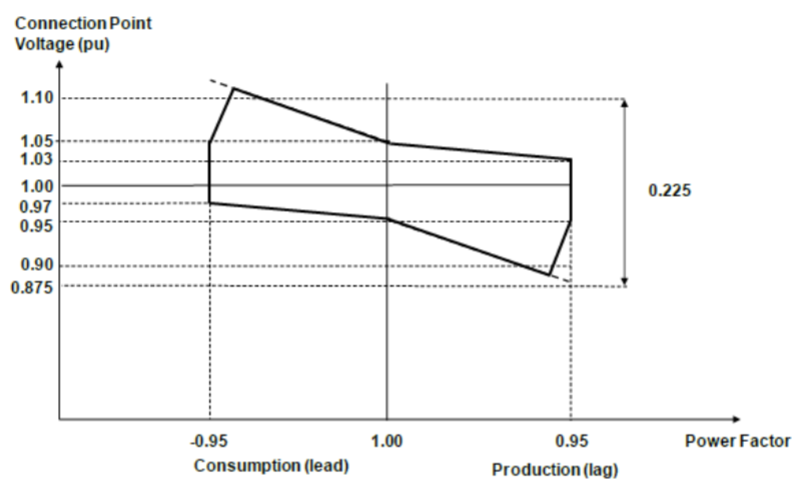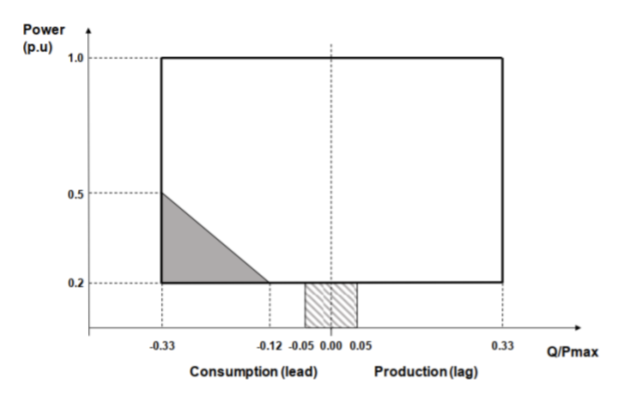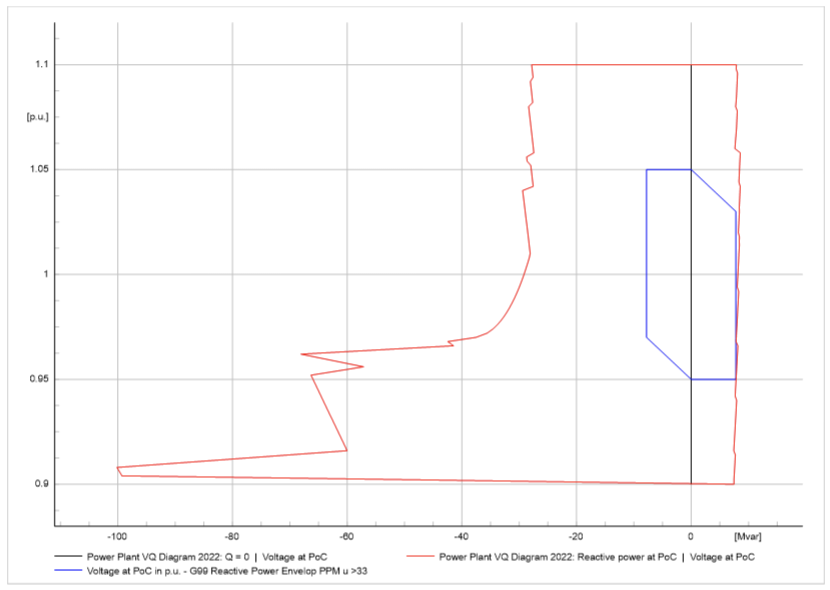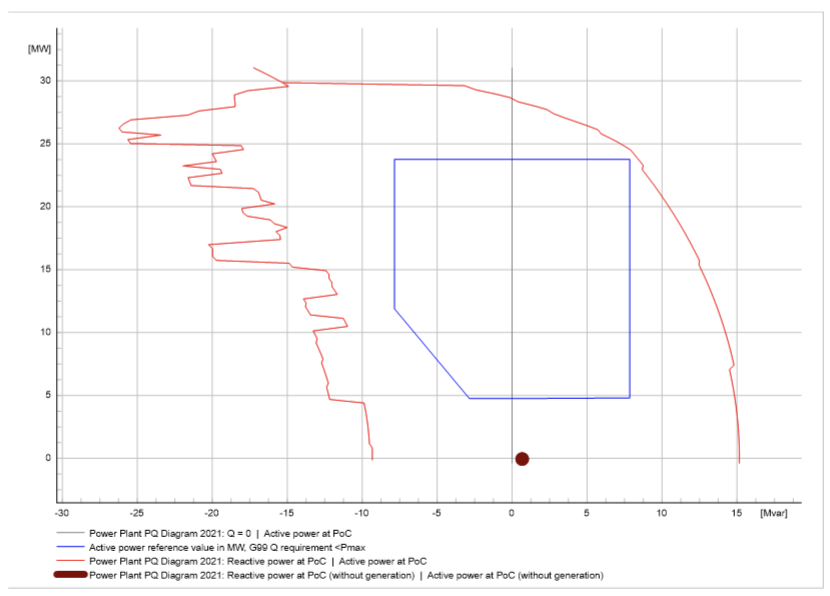Food Enterprise Park
Food Enterprise Park - Brief
We were requested by a client to specify a 30MVA 33/11kV transformer (Main PV TX) to interconnect a solar farm network to an industrial food network. This was fed by a 132kV DNO network via a 30MVA 132/11kV transformer. The 33kV cable linking the PV (photovoltaic) farm and the industrial food network is over 3km long. We were asked to assess the steady state conditions such as reactive capability, thermal ratings and voltage regulations to ensure the power moved safely through each transformer and met the DNO regulation.
Food Enterprise Park - Challenge
As part of a G99 study, the PV generation is required to fulfil certain reactive capability requirements. In this case, due to the 132kV connection, the plant is categorised as a type D generation plant, which has its own set of reactive capability requirements as shown in Figure 1 and Figure 2 below. The system is required to operate within the thermal limits of the equipment such as transformers and cables. The voltage across the whole network must remain within the statutory limits defined in ESQCR.

Figure 1 - Reactive Power Capability Requirements for Type C/D Power Park Modules at Registered Capacity with Voltage above 33kV

Figure 2 - Reactive Power Capability Requirements (Power Park Modules operating below Registered Capacity)
Food Enterprise Park - Solution
Multiple operational scenarios and network variations were created for the purposes of load flow studies, in order to investigate the maximum registered capacity of the PV inverters and their compliance to specified reactive capability requirements. In addition, onload tap changers are employed to regulate the voltages on the 33kV and 11kV networks. The results are presented in Figure 3 and Figure 4 below.
Due to the result of limited active power output generating from the inverters, an installation of a local (11kV) capacitor bank is recommended to compensate the reactive power required and increase inverter active power output without overloading inverter transformers, main PV transformer and 33kV cables linking the PV network and industrial food network.

Figure 3 - Reactive Power Capability vs Voltage

Figure 4 – Active/Reactive Power Capability
Find out more about our Power System Analysis services.
